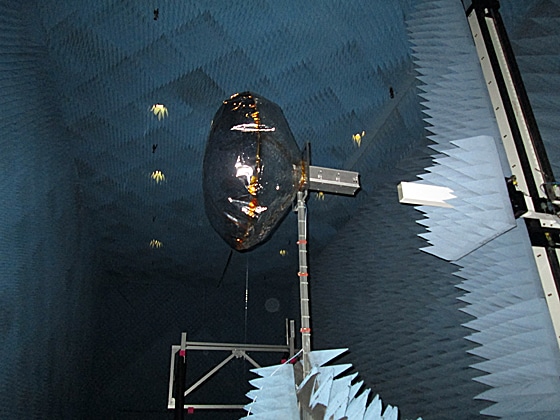
A new inflatable antenna design developed by researchers at MIT may significantly increase the communication range of small satellites, enabling them to travel further from Earth.
Tiny satellites are making space exploration more accessible by enabling space agencies such as NASA to launch them into space at a fraction of the weight and cost of traditional satellites. However, the small size of these “CubeSats” prevents them from carrying large, far-ranging radio dishes; instead, these satellites are equipped with smaller shorter-range antennae, effectively restricting them to orbits below those of most geosynchronous satellites.
MIT researchers say the new inflatable antenna significantly amplifies a radio signal, allowing a satellite to transmit data back to Earth at a higher rate from a distance seven times more than that of existing CubeSat communications.
“With this antenna, you could transmit from the moon, and even farther than that,” Alessandra Babuscia, a postdoctoral student who led the research project at MIT, said. “This antenna is one of the cheapest and most economical solutions to the problem of communications.”
The concept of an inflatable antenna is not new—engineers often utilize a system of pressure valves to inflate these antennas with air once in space. However, these often-bulky systems will not fit on a satellite the shoebox-sized body of a CubeSat. Also, says Babuscia, small satellites are often launched as secondary payloads aboard rockets containing multiple scientific missions. If a satellite equipped with a pressure valve inflation system were to backfire, it could destroy the satellite and potentially damage the other missions aboard the rocket.
Instead, the team chose a solution that utilized a sublimating powder, a chemical compound that transforms from a solid powder to a gas when exposed to low pressure. The team built and successfully tested two prototype antennae in a vacuum chamber at MIT.
“It’s almost like magic,” Babuscia said. “Once you are in space, the difference in pressure triggers a chemical reaction that makes the powder sublimate from the solid state to the gas state, and that inflates the antenna.”
Using sublimating powder can also help avoid problems caused by micrometeroid impacts, she added, explaining that sublimating powder will only create as much gas as needed to fully inflate an antenna. Residual powder will be left to sublimate later to compensate for leaks or punctures. The right powder could potentially help extend the lifetime of a CubeSat’s inflatable antenna.
